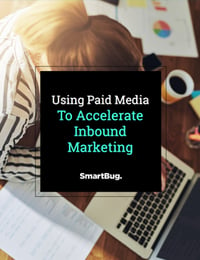
10 Ways to Reduce Customer Acquisition Cost
May 17, 2023
How effective are your current marketing strategies? A good measure of efficacy is your paid channels’ customer acquisition costs (CACs).
What Is Customer Acquisition Cost?
Customer acquisition cost (CAC) is the total amount of money spent by a business to acquire new customers for their products or services. This includes both up-front costs associated with marketing campaigns, such as pay-per-click ads (PPC), and ongoing expenses related to customer retention efforts, such as email campaigns or incentives. By understanding how much you spend on acquiring new customers, you can identify where there are opportunities for savings and find out if you are spending too much on certain channels.
Why Is CAC Important?
Monitoring customer acquisition cost is important because it helps businesses understand their return on investment (ROI) for each marketing campaign they run. If the cost of acquiring a customer is higher than its average revenue per user (ARPU), then it means that the business isn’t making enough money off each customer to cover the costs associated with acquiring them in the first place. Tracking CAC also allows businesses to determine which marketing channels are working best for them so they can allocate resources more effectively.
CAC is an important indicator of your overall marketing success. Lower CAC = more customers = additional ROI.
There is no standard yardstick for determining a good or bad CAC. CAC is dependent on a number of factors—most importantly, the industry you’re in and the lifetime value of your customer. It would be unrealistic to aim for a $50 CAC for a customer with a lifetime value of $50,000 because a customer who will spend $50,000 requires a lot more convincing than someone spending $500.
How Can You Use CAC to Improve Your Profit Margins?
If you’re seeing a CAC that goes far above your organization’s target CAC, you might benefit from the following strategies for keeping your customer acquisition costs low:
1. Calculate CAC Correctly
Your CAC is your total sales and marketing cost divided by your total number of new customers. To earn a positive return on investment, you should start off with a target CAC. This will serve as a benchmark for your sales and marketing efforts.
If you’re a new business, look into average CACs for your industry and spend some time calculating a reasonable CAC that would enable your business to be profitable.
2. Retarget
One of the easiest ways to bring users back into the funnel and have an optimal CAC is by utilizing retargeting (called remarketing in the Google Ads platform). You can leverage the Google Ads display network or Facebook Ads to do this. Using a combination of the two channels ensures that you’re reaching your target audience at every step of the funnel, increasing the likelihood that they will convert.
On the Google Ads side, you can use remarketing lists for search ads (RLSAs).
If you don’t have a significant budget for running intent-based ads, retargeting can be a cost-effective way to get new customers at a reasonable CAC.
3. Build Strong Google Ads Campaigns
Although there’s no right or wrong way to build a search campaign, there are several best practices that help optimize user experience and improve conversion rates.
A good example is using targeted keywords, ad copy, and landing pages. For example: If you’re promoting a free trial for a CRM, a good keyword to use would be “CRM free trial” instead of just “CRM.” Your ad copy should mention the words “free trial” in the headline and description text, and your landing page should also have “free trial” mentioned above the fold. All of this makes for cohesive messaging, which is integral in getting new customers to sign up for your product or services.
4. Test Your Ad Copy
One version of your ad copy could give you good results, but you can always make those results better by optimizing your copy.
Look at the click-through rates to identify your best-performing ads and see how they differ from ads that don’t perform as well. Pause your low-performing ads and write variations that are similar in style and language to the stronger ads.
Constantly improving and optimizing aspects of your paid media strategy is imperative for reducing CAC in the long term.
5. Test Creative Elements
If you’re using a visual platform like Facebook Ads to promote your business, look at the click-through rates, conversion rates, and post engagement for your creative assets. Depending on these numbers, you can add in some creative testing to your marketing strategy by implementing similar creative—play with the contrast, test illustrations versus lifestyle images, and so on.
6. Improve Your Conversion Rate
On the Google Ads side, you can improve your conversion rates by having themed ad groups. For example: Keywords related to “CRM free trial” and “small business CRM” should be in two separate ad groups.
Another quick way to improve your conversion rate is to add negative keywords to your Google Ads campaigns once or twice a week, depending on how much you’re spending on your search campaigns.
7. Improve Your Customer Retention Rates
Your customer retention rate measures how well you’re retaining customers, so when you add new ones without losing existing customers, your CAC doesn’t go up.
There are a few different strategies to improve your customer retention rates. One in particular is doing deep analysis of customer churn: Why are customers churning and what can you do to prevent it? Is it an easy fix?
8. Use Marketing Automation
Using marketing automation, such as a lead nurture or email drip, can also help reduce your CAC. A good example is promoting a free trial or white paper through your paid media efforts, and then using the emails you’ve acquired in a lead nurture. Think about the value you can offer to these leads. They’re already in your pipeline. Having a strong lead nurture workflow can help convert those leads into paying customers.
9. Optimize Your Funnel
Google Analytics is a wonderful platform that can help you understand behavior flow across your webpages and see where exactly users are dropping off. You can use this data to improve your landing pages, website copy, and the forms on your website.
10. A/B Test Your Landing Pages
An A/B landing page test helps you test two variants of your landing page. Based on Google Analytics data around bounce rates and exit pages on your landing pages, a test such as changing a button color or call-to-action text can have an incremental impact on your conversion rates, which directly impacts your CAC.
A good rule of thumb is to let a landing page A/B test run for 2-4 weeks, depending on the amount of traffic it gets, so you can have statistically significant data.
Although these 10 ways to reduce customer acquisition costs may seem like a lot, a staggered implementation approach can help improve your return on investment and decrease marketing spend.
This blog was originally published in 2020 and has been updated since.
About the author
Courtney Fraas is a SmartBug Media Inbound Marketing Strategist based in Savannah, GA. With eight years of marketing experience, Courtney specializes in copywriting, visual design and project management. When she isn’t crafting customer-focused messaging, Courtney is busy traveling near and far, playing with her pup, and becoming an expert Airbnb host. Read more articles by Courtney Fraas.






